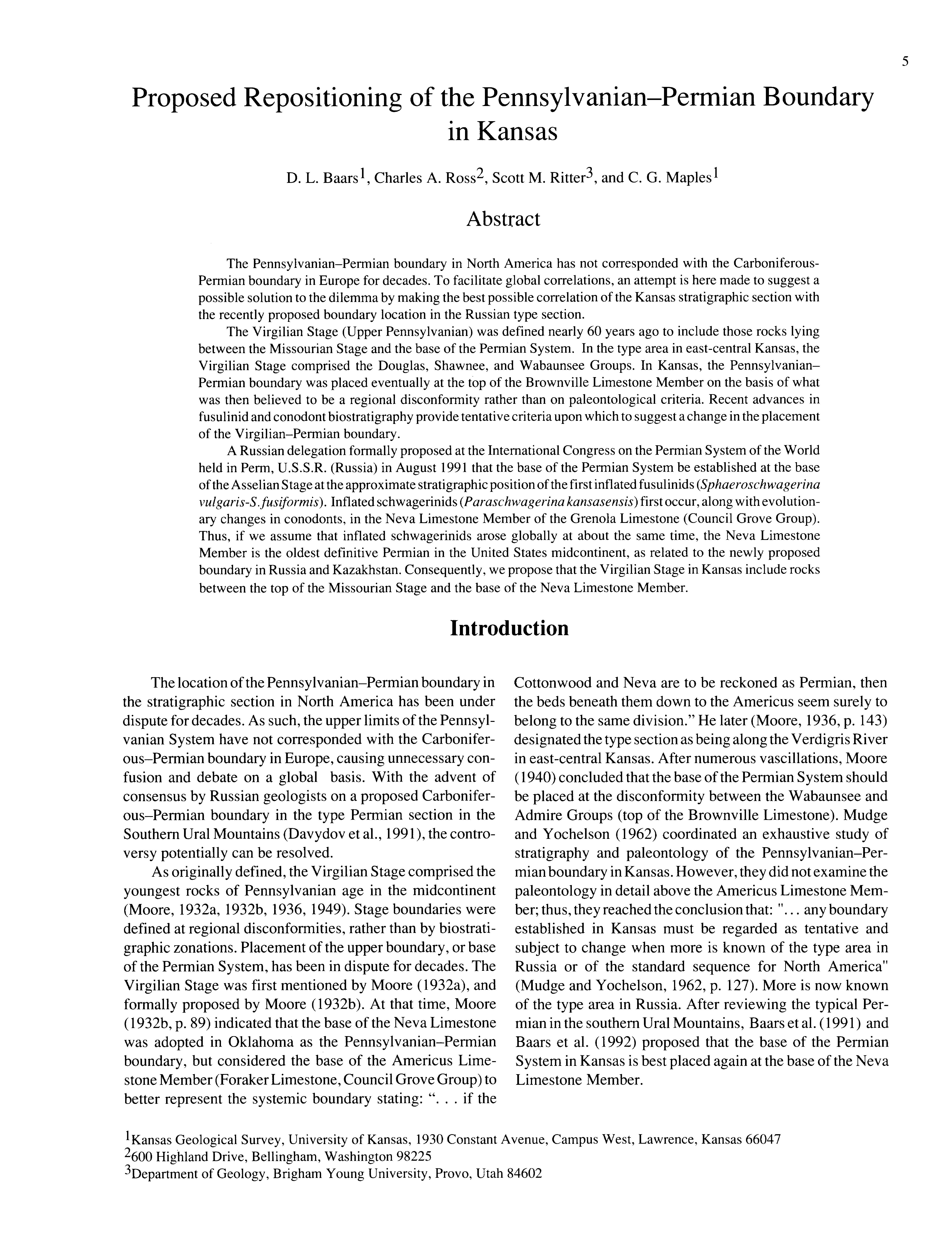Proposed Repositioning of the Pennsylvanian-Permian Boundary in Kansas
DOI:
https://doi.org/10.17161/kgsbulletin.no.230.20480Abstract
The Pennsylvanian-Permian boundary in North America has not corresponded with the Carboniferous-Permian boundary in Europe for decades. To facilitate global correlations, an attempt is here made to suggest a possible solution to the dilemma by making the best possible correlation of the Kansas stratigraphic section with the recently proposed boundary location in the Russian type section.
The Virgilian Stage (Upper Pennsylvanian) was defined nearly 60 years ago to include those rocks lying between the Missourian Stage and the base of the Permian System. In the type area in east-central Kansas, the Virgilian Stage comprised the Douglas, Shawnee, and Wabaunsee Groups. In Kansas, the Pennsylvanian-Permian boundary was placed eventually at the top of the Brownville Limestone Member on the basis of what was then believed to be a regional disconformity rather than on paleontological criteria. Recent advances in fusulinid and conodont biostratigraphy provide tentative criteria upon which to suggest a change in the placement of the Virgilian-Permian boundary.
A Russian delegation formally proposed at the International Congress on the Permian System of the World held in Perm, U.S.S.R. (Russia) in August 1991 that the base of the Permian System be established at the base of the Asselian Stage at the approximate stratigraphic position of the first inflated fusulinids (Sphaeroschwagerina vulgaris-S. fusiformis). Inflated schwagerinids (Paraschwagerina kansasensis) first occur, along with evolutionary changes in conodonts, in the Neva Limestone Member of the Grenola Limestone (Council Grove Group). Thus, if we assume that inflated schwagerinids arose globally at about the same time, the Neva Limestone Member is the oldest definitive Permian in the United States midcontinent, as related to the newly proposed boundary in Russia and Kazakhstan. Consequently, we propose that the Virgilian Stage in Kansas include rocks between the top of the Missourian Stage and the base of the Neva Limestone Member.
Downloads

